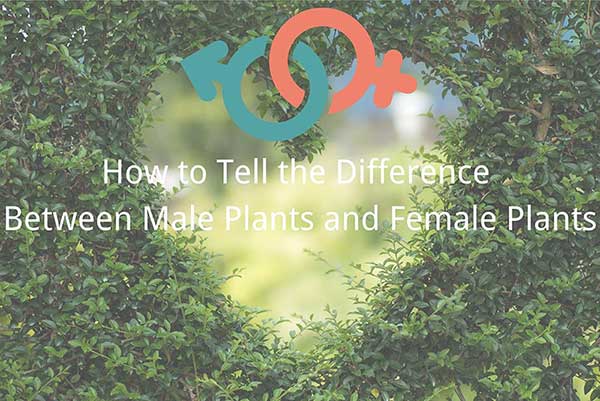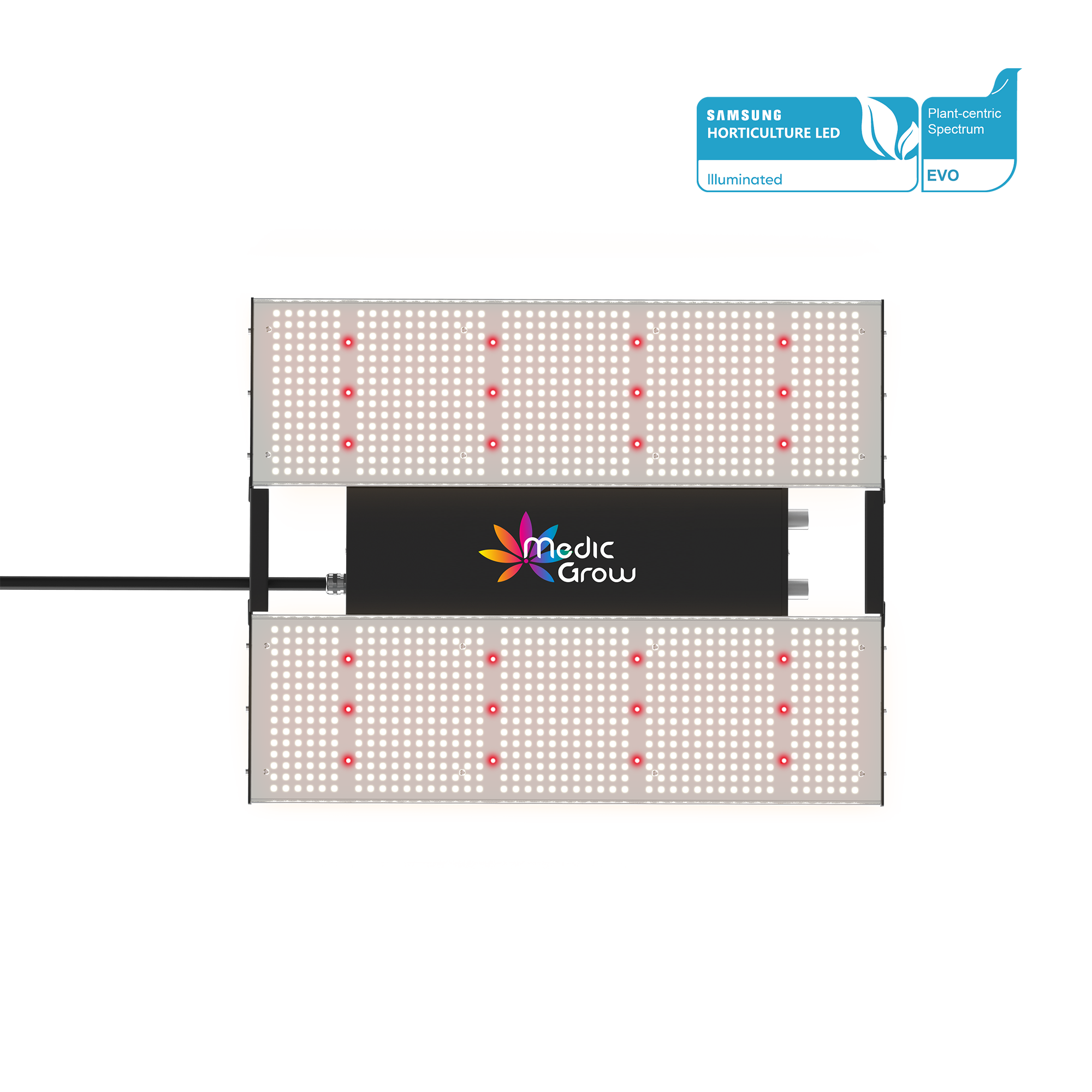
How to Tell the Difference Between Male and Female Plants
Like every other type of entrepreneur who sets out on a business venture, minimizing costs and maximizing profits is the farmer's greatest interest.
This is why, if you're reading this and are considering growing plants (male and female plants) with/without grow lights, it is of utmost importance that you understand the whole process and the most effective methods for maximum profit-making.
Read this article by Medicgrow, and you’ll surely find everything you need to get started. The knowledge of the sex between male and female plants and their effect on production is of most importance. Being able to tell the male from female plants, makes such a great difference for reasons that will be unveiled as this article goes on.
Main Content:
- 1. Do Plants Have Genders?
- 2. When Do Plants Reveal Their Gender?
- 3. Male vs. Female Plants
- 4. How to Know if Your Plant Is Male or Female?
- 5. How Do Light Periods Affect Plants' Gender?
- 6. Conclusion
- 7. FAQs About Male and Female Plants
Do Plants Have Genders?
Like every other living creature, plants too are in male and female plants. They possess reproductive organs enabling them to multiply and reproduce under the right conditions.
Most plants have both male plant parts and female plant parts in one plant, so they can fertilize their flowers using their pollen. A good number of plants have distinct male and female plants with unique characteristics and abilities.
For these plant species, the performance of the female plants is much better than the male plants in flowers, and here's why.
The female plants always produce the fattest and most resinous flowers; they bud much better than their male counterparts. The male plants in veg don't bud well enough or produce enough flowers.

Hence, most breeders prefer to have more female than male plants. Only for research and educational purposes can male plants be preferred, but for the breeder whose primary motive is to produce as many flowers as possible for profit, this difference between male vs female plants makes it vital to sex plants.
Another reason why the sex of a plant is crucial is that the male plant can interrupt the quality and level of production of the female if you breed them together.
This happens because the males produce pollen, and when a male pollinates a female, it transfers its energy into producing seeds. This significantly wanes the ability of female plants to grow buds. They still will, but not as big and not of enough quality.
The female plant has a natural biological drive for reproduction. This can be maximized by separating it from the male plants. That drive will make it continually reach out for pollen and lead to bigger, more resinous buds.
What's more?
If you're the exploratory type and are interested in crossing male and female pot plants, then you must know the plant's gender. This will give you control and many options to consider in crossing different breeds of these plants.
When Do Plants Reveal Their Gender?
Having realized the need to know plants' gender, the next step is knowing how soon you can recognize their genders so you can separate them on time.
Both male and female plants typically go through two stages in their life cycle; the vegetative stage and the flowering stage.
The vegetative stage is the first stage and is the period when plants focus on growing taller and larger. Here, there are no male plants vs female plants contests; they both sprout the same and do not seem to be any different.

This period usually lasts around six weeks, after which comes the pre-flowering stage when early signs begin to appear, and you can almost predict the gender of the plants.
However, if you cannot distinguish the female plants from the male at this point, then you'd have to wait for the flowering stage.
The flowering stage is where attention shifts for both the male and female plants from growing taller and bigger to doing more "adult stuff."
This entails growing buds and producing pollen. It is at this point that they can be classified into male and female plants.
Male vs. Female Plants
During the phase of vegetation, both male and female plants look identical. With the transition into the flowering phase comes the revelation of their sexes; this means that as they grow, it becomes clearer to know if your plant is male or female.
During the flowering phase, males develop pollen-filled sacs, while females tend to house more plant compound by developing resinous buds.

Image Source: newnormal420.com
When it comes to demand, the female plants are more popular among casual growers; those who need to cultivate some personal stash. They may also vary from their other female plants identically. This variation is determined by their unique genetic compositions.
Some female plants stay stunted in height and have more lateral growth with dense canopies. While others may grow to as high as 3m, generate massive outputs and harvests, and appear like regular garden trees.
One common feature of all-female plants is that they all produce flowers. The term commonly used to describe these flowers is ‘buds.’ These buds have trichomes, which are glandular strictures that generate plant compound like CBD and THC.
On the other hand, male plants don’t have this flower-generating feature, which makes them less in demand among growers seeking only for buds.
These plants possess pollen sacs that help house the genetic material with which they fertilize the female flowers. The pollen sacs are vital for reproduction and the creation of hybrids.
If you need to breed new strains of your plants, then it is vital to nurture and use the males for this purpose.
Note that both the female flowers and pollen sacs of the males develop at the exact location of the plant. These two structures emerge from the junction between the main stem and branches (the nodes).
So, it’s wise to look out for pollen sacs at the same points where you find the buds, even on male plant parts.
How to Know if Your Plant Is Male or Female?
Understanding the anatomy of your plant makes it easier to sex them eventually; you need to know the basics. Both male and female plants give rise to flowers and pre-flowers respectively at the junction between branches and the main stem.
The first set of pre-flowers appear between the stalk of the main plant and the petiole (the stem of a fan leaf), mostly at the plant’s top. The truth is male plants tend to appear and develop earlier than females.
So, you should search for the pre-flowers of plants just at the higher branch/stalk junctions, as earlier stated. You might need to magnify the view with recommended magnifiers if necessary. After this, proceed to identify the stipule – a leafy flap that protrudes from the junction.
It could be tempting to want to confuse the stipule for the pre-flower, but here’s a guide. Usually, the sex parts of plants are situated at the back of the stipule. Taller growth tips emerge behind the sex parts of the buds/pre-flower.
These tips are going to serve as auxiliary branches that produce buds in the future.
Early Signs of Male Plant
At the very early stage, the pollen sacs appear to be more rounded than that of the pre-flower of the female plants. This feature is called the ‘spade,’ and it appears like a spade suit found in a pack of cards. When it starts to get larger, the pre-flower of male plants looks like a ball attached to the end of a stick.

The pre-flowers found on male plant parts are called staminate. This staminate finally grows into the pollen sacs that house its genetic material. It is best to call or ID the males before they arrive at this stage of their development.
Early Signs of Female Plant
The anatomy of female plants varies from that of the males even at the very early stage. Their preflowers have an ovate shape, appear pear-like, and have long and slim tips. This structure is called the calyx.

Image Source: growithjane.com
Pistils are white structures that also extend from the tip of the calyx; they are hair-like protrusions and may come in pairs. It is important to note that not all female plants tend to develop pistils.
At this point, there may still be some uncertainties you might have regarding the sex of your plants. However, don’t be in a rush to make drastic decisions.
Here’s another difference you may find between male vs female plants:
Male plants tend to appear a bit more gangly than females. They have greater inter-nodal spacing between themselves, may be tall, possess fewer fan leaves, and are narrow. Female plants, however, appear bushy and more compact.
How Do Light Periods Affect Plants' Gender?
Deeply-seated within plants is an internal process that helps them detect the duration in which they can get uninterrupted darkness every day. As the days get shorter with longer nights, the male and female plants realize that winter is near and begin to bud as they get to the end of their lifecycle in the wild.
When growing plants outdoors, the gardener doesn’t need to do anything to induce budding or flowering since the sun helps the process. All that is needed is for the plant to get placed directly under sunlight, so it receives sunlight during the day and total darkness at night.
If the plants are grown indoors, it is important to trick the plants into believing that winter is close, so they can produce buds/flowers. It is achieved by changing the plant schedule to 12-12 where the plants get 12 hours of light and 12 hours of darkness.
If you wish to achieve the above, you would need full-spectrum LED grow lights like Medicgrow Smart-8 and an indoor grow tent kit. With these lights, you can decide just how much light would get to your plants. You can also set different schedules, and your plants would require a minimum of 8-10 hours for better outcomes.
The answer to the above question on the effect of light on your plant is simple. The light periods don't affect the genders in themselves; they help reveal the gender of the plants as time unfolds.
After two or three weeks of maintaining the 12-12 light period, most plants begin to manifest the early signs of their gender. Male plants grow pollen sacs, while the females grow buds.
Conclusion
Identifying the sex of plants is essential since it determines what to expect and other decisions you may need to make with your plant, e.g., cloning.
Light schedules help to reveal the gender of your plant, especially when plants are grown indoors. It is exciting to easily identify and distinguish plants by their sexes. Use this guide to make the distinction in your garden today.
Related Posts:
What Growers Should Know: The Importance of Photoperiod For Plants
Is Light Necessary for Seed Germination?
7 Factors Affecting Plant Growth - How to Make Plants Grow Faster?
FAQs About Male and Female Plants
1. How to Identify Male and Female Plants?
Male plants can be recognized early in their growth, between the 3rd and 6th week, by the appearance of small, round balls at the nodes, which are the developing pollen sacs. These plants are typically taller and less bushy, lacking the white, hair-like pistils found on female plants.
In contrast, female plants start showing their pre-flowers a bit later, characterized by tiny white hairs (pistils) emerging from teardrop-shaped buds at the leaf joints, indicating their reproductive parts that are essential for bud production.
2. What Is Female Reproductive System in Plants?
The female reproductive system in flowering plants (angiosperms) centers around the flower, specifically the pistil, which comprises the stigma, style, and ovary.
The stigma serves as the sticky receptor for pollen, the style is a narrow conduit through which pollen tubes grow, and the ovary houses ovules, each containing an egg cell.
During pollination, pollen grains are transferred from the male parts (stamens) to the stigma, initiating the growth of pollen tubes that extend down the style to the ovary, allowing sperm to fertilize the egg within the ovule.
The intricate system ensures genetic diversity by enabling sexual reproduction and is crucial for the adaptability and survival of plant species across various environments.
3. What Are the Early Signs of Female Plants?
Male and female plants have different early signs. Female plants begin to show pre-flowers between the fourth and sixth week of growth, characterized by the emergence of small, white hairs (pistils) at the nodes, where branches meet the stem.
Additionally, female plants typically exhibit a bushier and more compact growth pattern than their male counterparts, with denser branches and foliage. Another sign of a female plant is the development of the calyx, a teardrop-shaped structure at the base of each pistil. This structure swells and forms the majority of the bud as the plant matures.
Featured Products
Blog Posts
Contact Us with Any Idea!
- Choosing a selection results in a full page refresh.
!
































